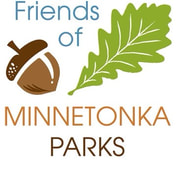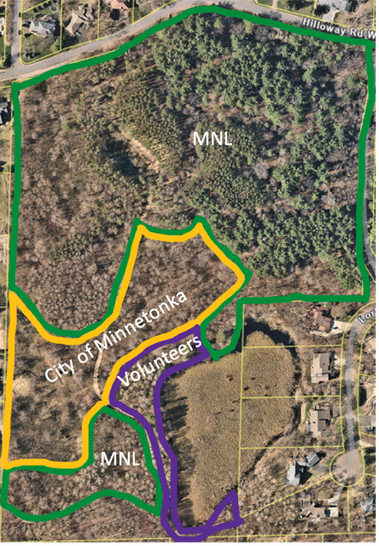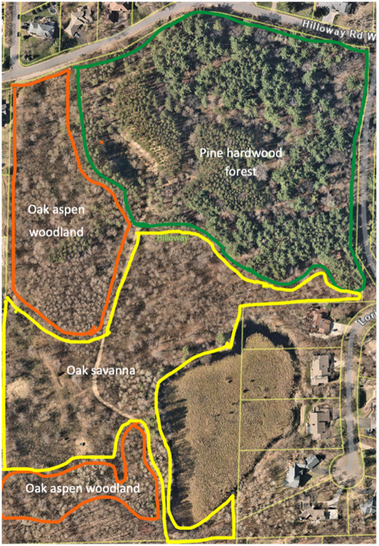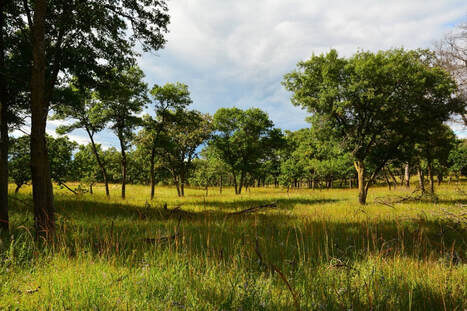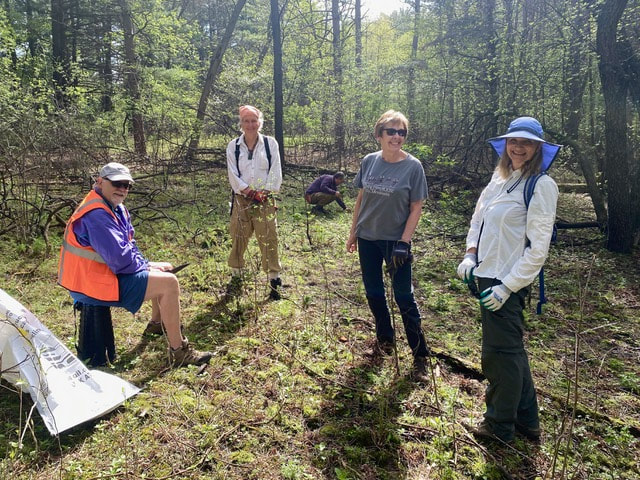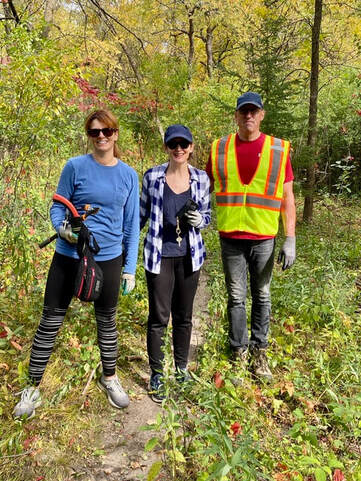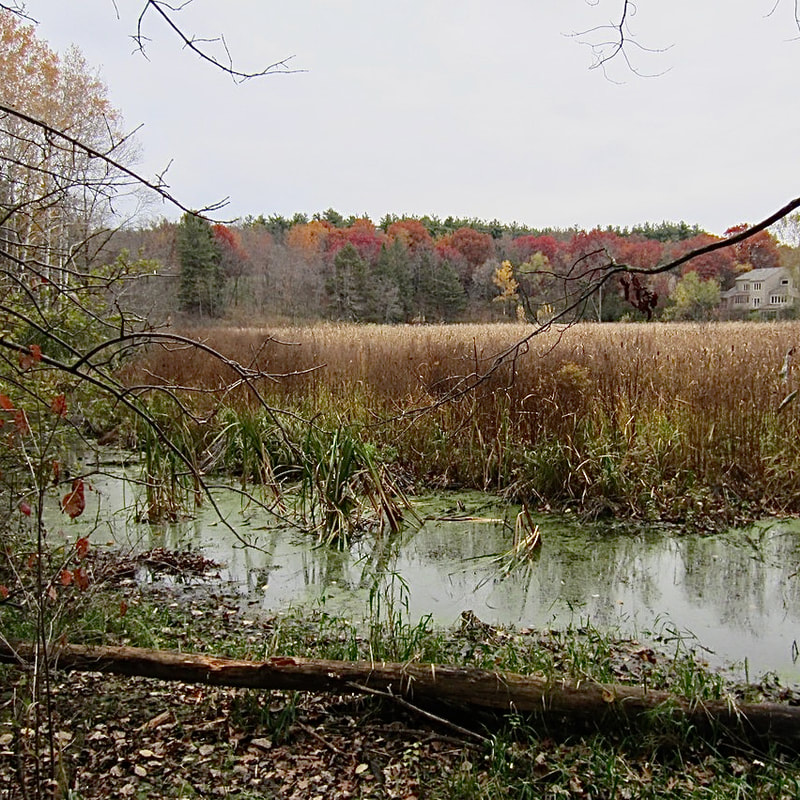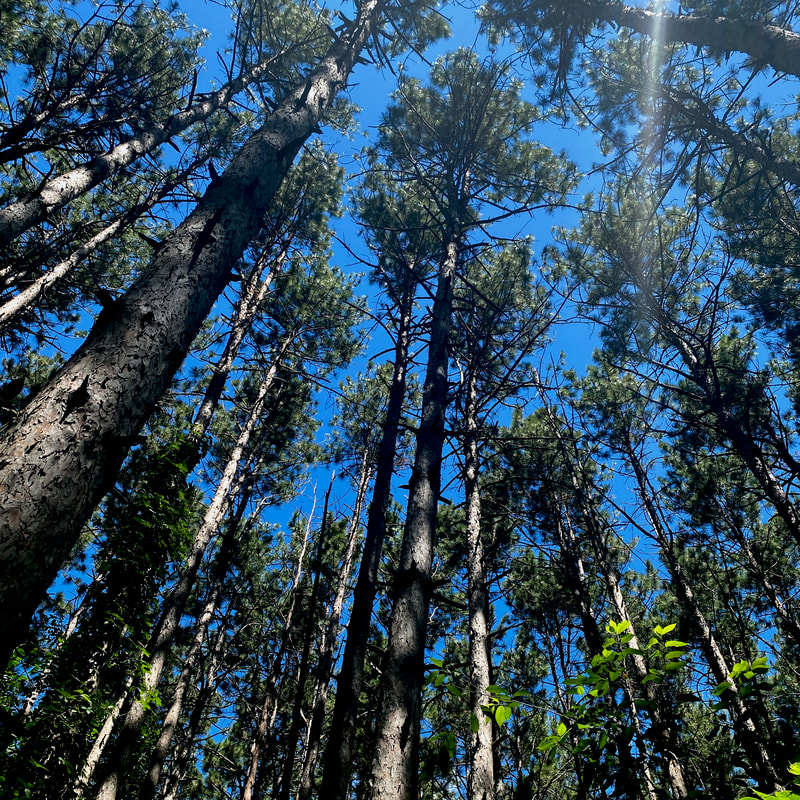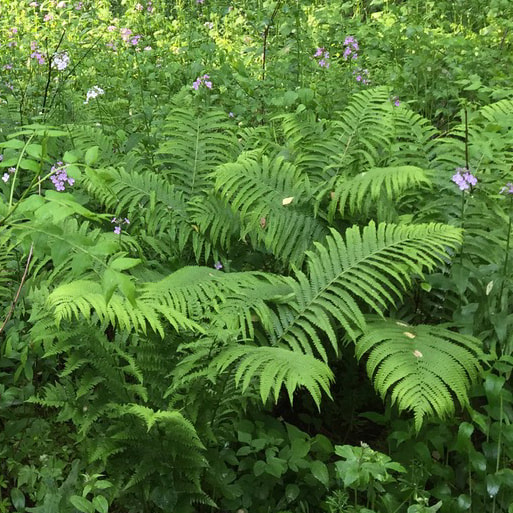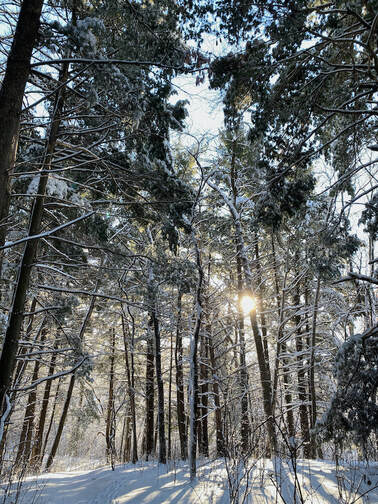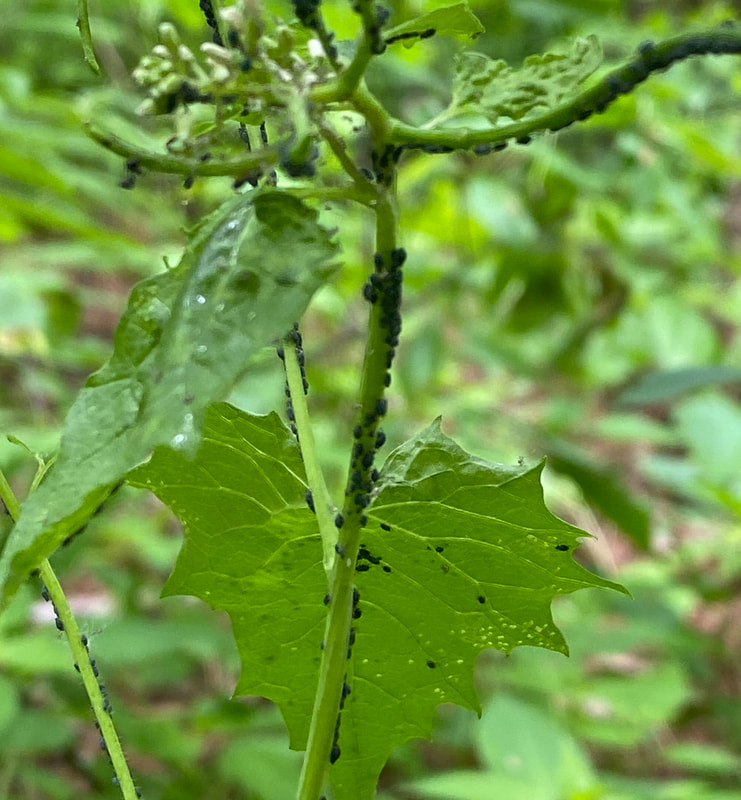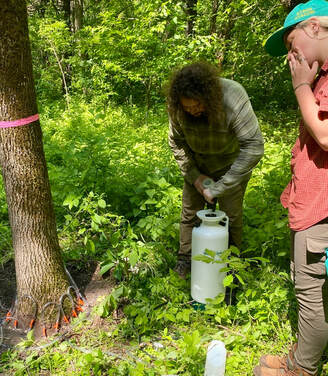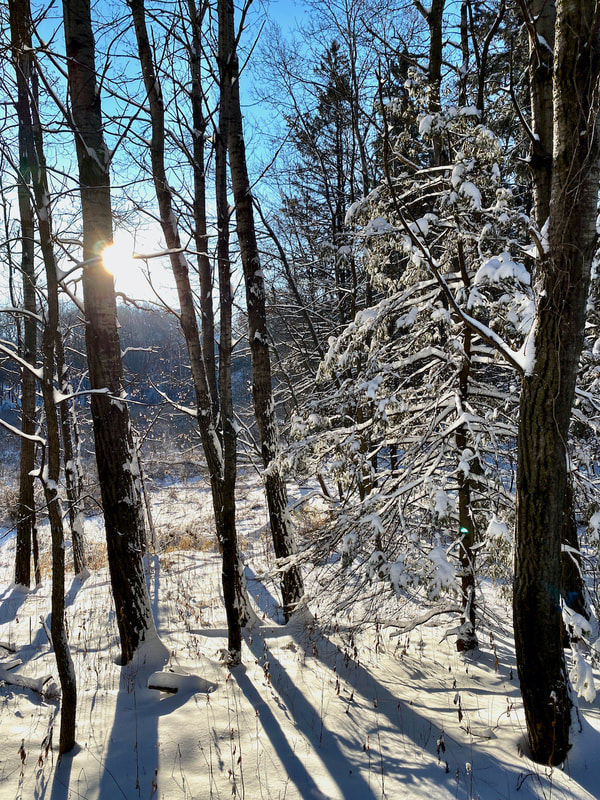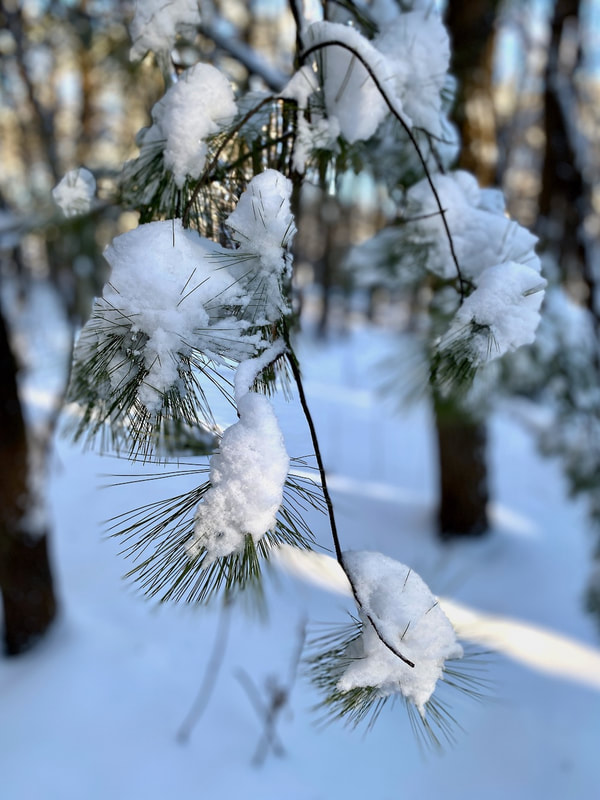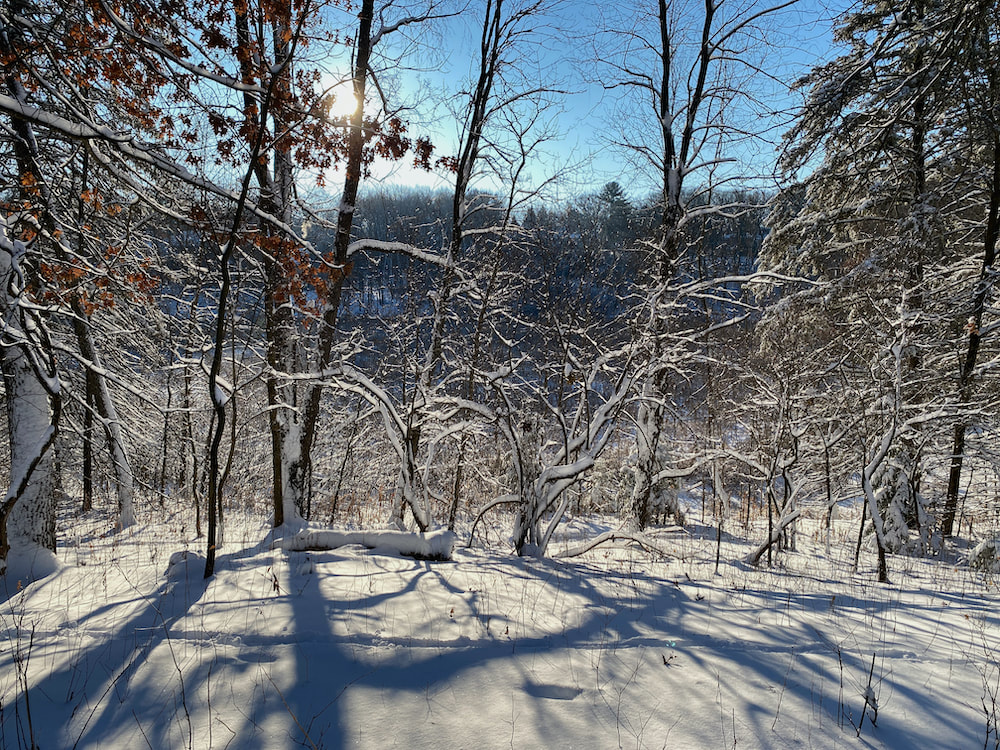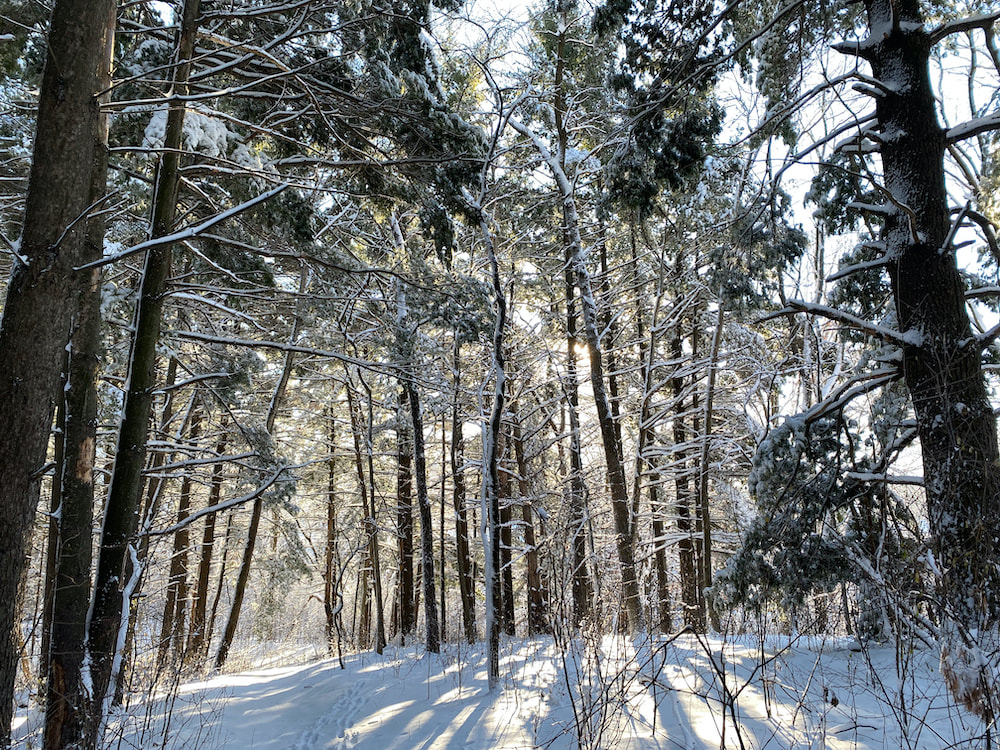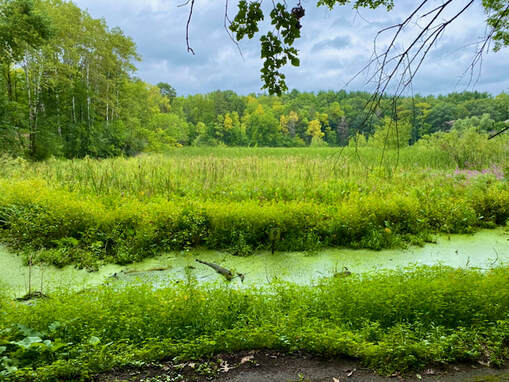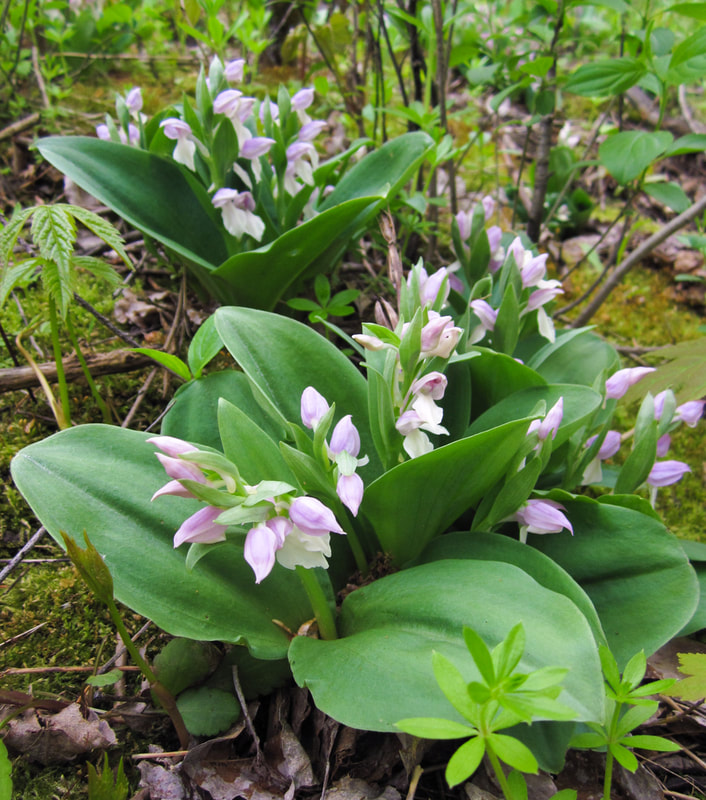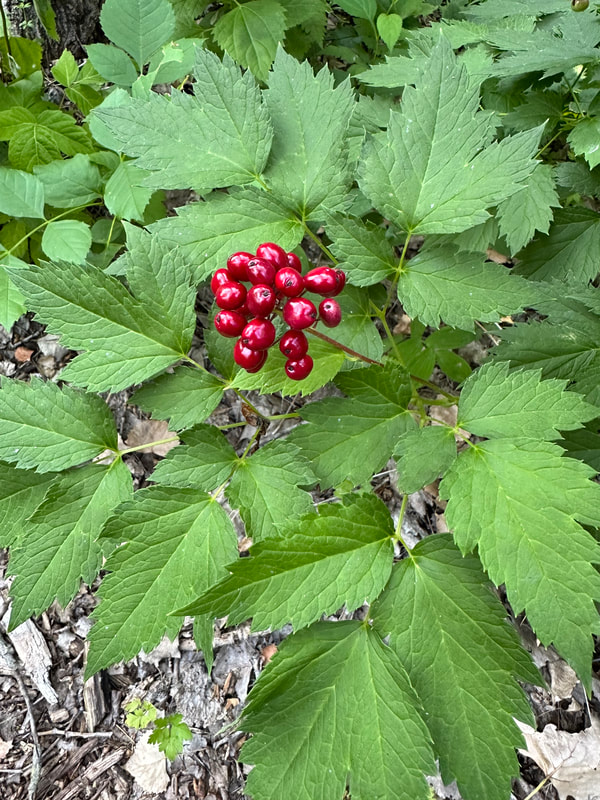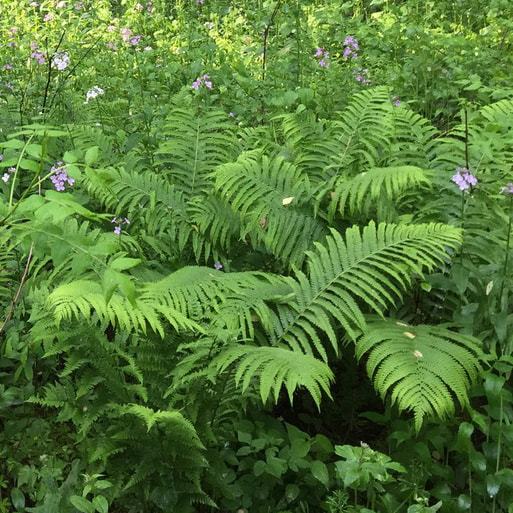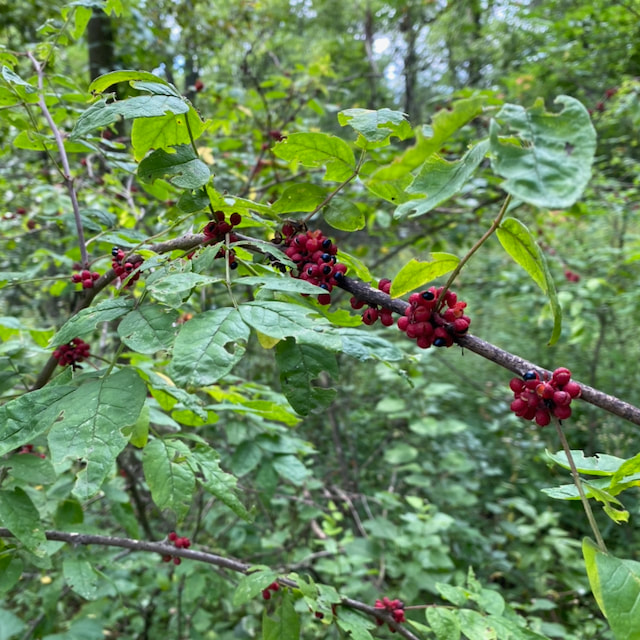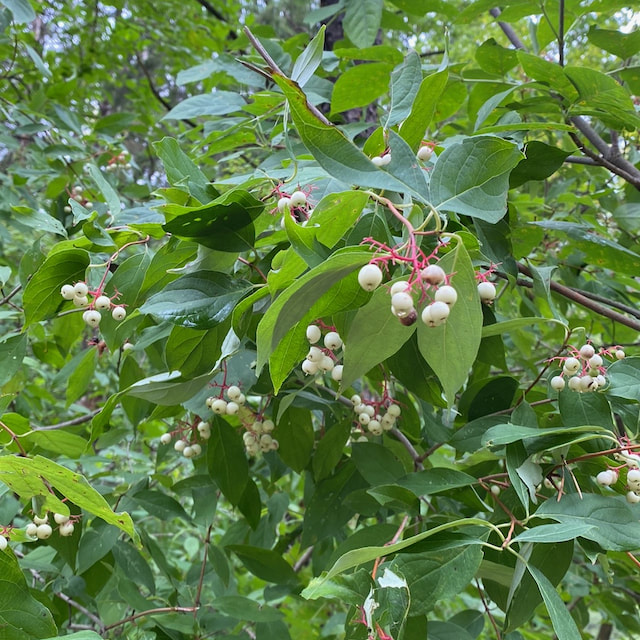Friends of Hilloway Park
|
Our mission is to protect and restore Hilloway Park, a 28-acre nature preserve in Minnetonka, MN. We operate under the umbrella organization, Friends of Minnetonka Parks.
|
|
|
Spring Event
Saturday, April 27th from 12 - 3pm |
Please click on this link to register for any or all of these upcoming events.
|
Current Restoration Project
|
2023
Hilloway Park was designated as top priority for restoration work in 2023 by the City of Minnetonka and so received significant attention from volunteers, city staff, and contractors. 25 volunteers provided over 216 hours of service removing garlic mustard, buckthorn, and other invasive plants in the park. In spring of 2023, the city used its forestry mower to remove buckthorn and undesirable brush and trees from the ‘yellow section’ on the map to the right. They spread buckthorn replacement seed, much of which successfully germinated during the summer. In late fall, Minnesota Native Landscapes (MNL) removed buckthorn and other brush from the ‘green sections’ below on the map. They will spread buckthorn replacement seed in spring of 2024. The city and MNL will continue to manage their respective sections, using a combination of tree removal, forestry mowing, herbicide application, seeding, and planting. FoMP volunteers have worked for the past two years in the ‘purple section’ around the fen. We will continue to work in this area, but our restoration goals will be different than in past years (see below). |
|
Volunteer Restoration Work
The map on the right shows the target plant communities identified by the Natural Resources Master Plan (NRMP) and MNL. Most volunteer work during 2024 will occur in the area identified as oak savanna. What is an oak savanna? Simply put, it is a prairie with trees – 10-50% trees –primarily bur oaks. Oak savannas are biologically more diverse than either prairie or woodland. This ecosystem was here before European settlement. With resources, hard work, and luck we hope to restore it. Why are we doing this? Less than 1% of land originally oak savanna remains in Minnesota. The loss of this habitat has meant steep declines in many species of plants and wildlife. In addition, oak savannas stabilize and develop soil, filter water, and provide carbon sequestration. Volunteer work in 2024 will occur mostly around the fen.
We will:
|
Friends of Minnetonka Parks hosted its first Buckthorn Blitz in Hilloway Park in the fall of 2021, supported by the City of Minnetonka. By the end of 2022, volunteers had removed buckthorn from 1.64 acres of the park and put down several pounds of buckthorn replacement seed mix, which consists of several types of native grasses and sedges. All together, 36 individual volunteers contributed 220 hours in Hilloway on buckthorn and other invasive plant removal (primarily garlic mustard) by the end of 2022.
|
In April of 2023, the City of Minnetonka used its newly purchased forestry mower to clear 7.25 acres of buckthorn. They also put down buckthorn replacement seed. Much of this seed is successfully growing in the park. The goal of this project is to restore a portion of Hilloway to oak savanna, which was the ecosystem prior to European settlement. It will take several years to eradicate buckthorn and establish the native plants of a savanna. FoMP and the City will work together on buckthorn and other invasive plant removal, both manually and with the forest mower, herbicide applications, possibly prescribed burns, seeding, and planting. A detailed restoration plan for all of Hilloway will be available in fall of 2023.
A recent study by the University of Minnesota found that 99.9% of buckthorn seedlings germinate within the first two years of planting. This is encouraging news, implying that a focused management effort for two years will remove virtually all buckthorn in an area. |
|
Hilloway Community Preserve
Hilloway Community Preserve is a 28-acre park located near the southeast of the intersection of I-394 and Plymouth road. The park features a dense pine stand, an aspen grove, a garlic mustard research area, two wetlands, and walking trails. The park includes several native Minnesota plant species, including two rare orchids, as well as several invasive species. Wildlife includes deer, coyotes, frogs, and several bird and insect species.
Cultural History
With the Traverse de Sioux Treaty of 1851, the Dakota Indians ceded much of southern and western Minnesota to the U.S. government. The vegetation in Minnetonka was oak-dominated savannas, tamarac swamps, and wetlands. The hardwood trees in the savannas were logged for the lumber industry and to accommodate farming.
In the 1930s, United Fur Ranches purchased land that includes the Sherwood Forest neighborhood and Hilloway Park. They farmed mink and fox in the eastern part of Sherwood Forest, and it was originally known as Fox Hills. Hilloway Park and much of the surrounding land remained mostly undeveloped pastureland for horses until the 1970s. Residents remember riding horses and flying kites in the area. Ridgedale was built in 1974 and development proceeded rapidly after that.
In the 1930s, United Fur Ranches purchased land that includes the Sherwood Forest neighborhood and Hilloway Park. They farmed mink and fox in the eastern part of Sherwood Forest, and it was originally known as Fox Hills. Hilloway Park and much of the surrounding land remained mostly undeveloped pastureland for horses until the 1970s. Residents remember riding horses and flying kites in the area. Ridgedale was built in 1974 and development proceeded rapidly after that.
|
Scientific Research in Hilloway
|
Garlic mustard
From 2005 to 2018, a section on the east side of Hilloway Park was designated a possible site for release of garlic mustard biocontrol agents – two types of European weevils (genus Ceutorhynchus) that feed specifically on garlic mustard. While scientists awaited approval to release the weevils, garlic mustard was allowed to flourish in Hilloway. The USDA recommended one of the weevils for release in 2017, but approval is still needed from other U.S. agencies. The same weevil was approved for release in Ontario, Canada, and was released in 2018. Establishment of the weevil is not confirmed, but Canada is expanding research sites. The University of Minnesota continues to pursue U.S. approval, but is no longer conducting research in Hilloway. This summer, another garlic mustard specialist, garlic mustard aphids (Lipaphis alliariae) have been sighted in several Minnetonka Parks, including Hilloway. This European aphid, first sighted in the U.S. in Ohio in 2021, has spread to several states. It sucks the sap of the garlic mustard plant, resulting in dying leaves and siliques (seed pods). Let’s hope this aphid can help us control garlic mustard! |
|
Emerald Ash Borer
In 2023, the University of Minnesota selected Hilloway as a site to study a biocontrol agent for emerald ash borers. Researchers inoculated healthy ash trees with a native fungus (Beauvaria bassiana) that causes disease in several insect species and is widely used to control agricultural pests. Researchers will visit the trees many times over the next several years to determine if this is an effective way to control the emerald ash borer. |
Rich Fen
Rich FenIn 2004, the Minnesota DNR classified the larger wetland of Hilloway Park as a ‘rich fen’, designating it as high priority for immediate restoration and management. In July of that year, the Minnetonka City Council approved $60,000 for improvements. Purple loosestrife is being managed through biocontrol. Currently, sediment from a nearby neighborhood is accumulating at one end of the fen, and invasive cattails have begun to grow.
|
